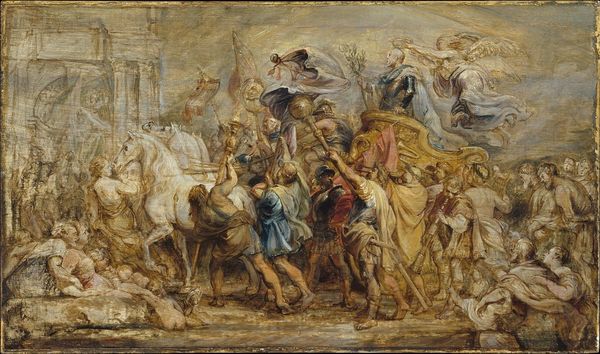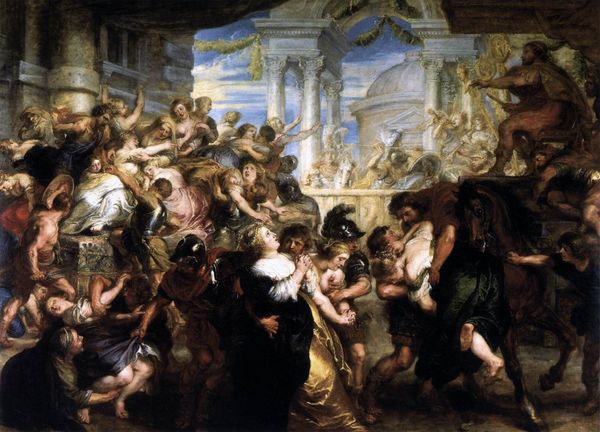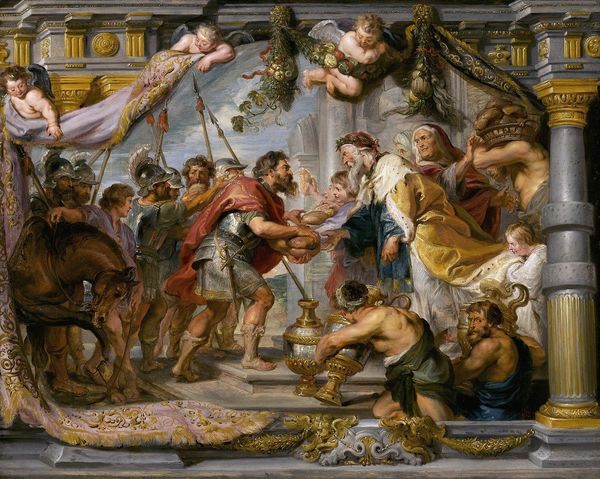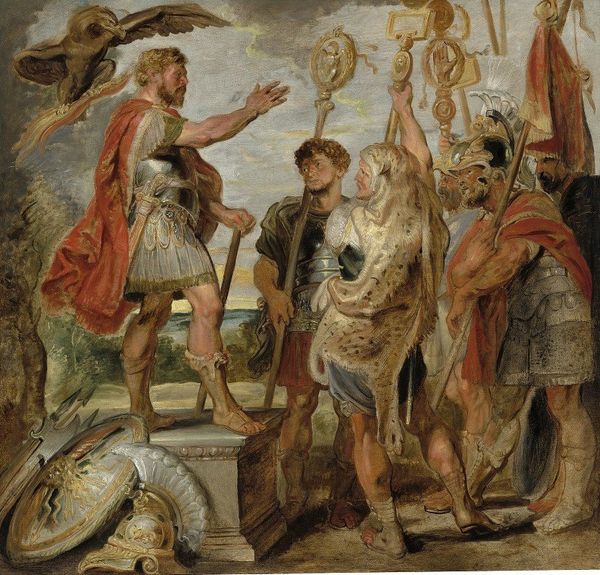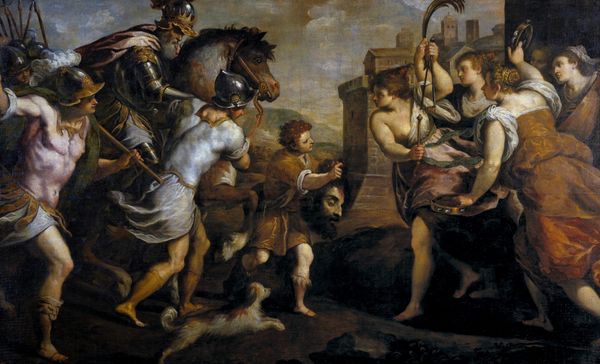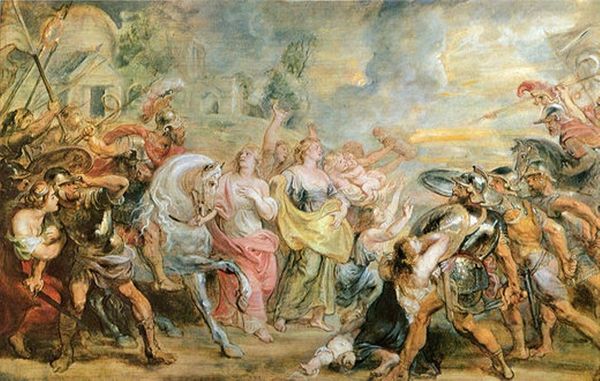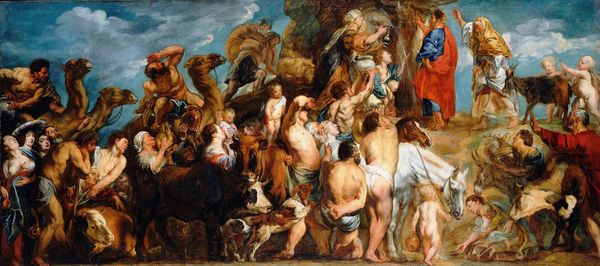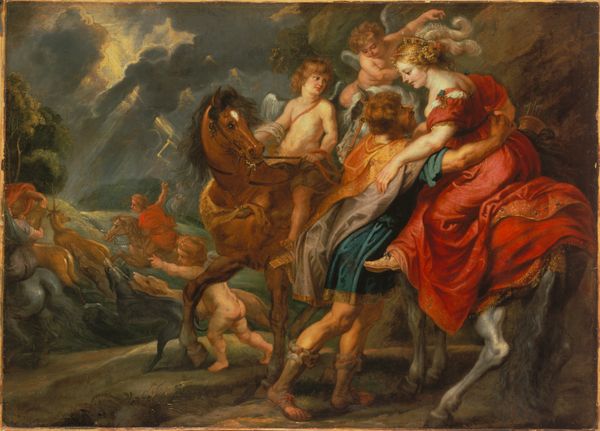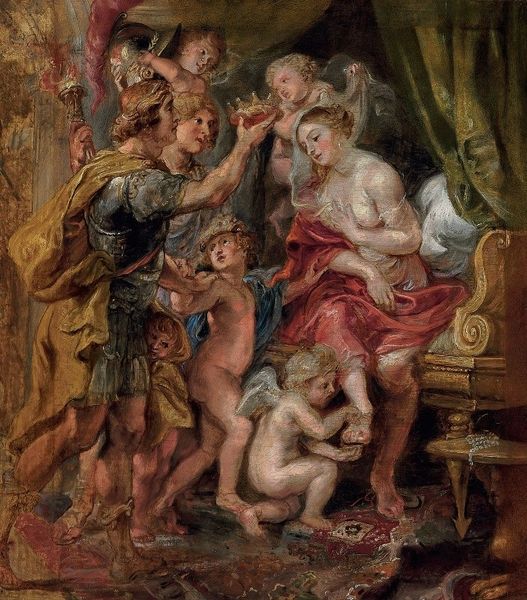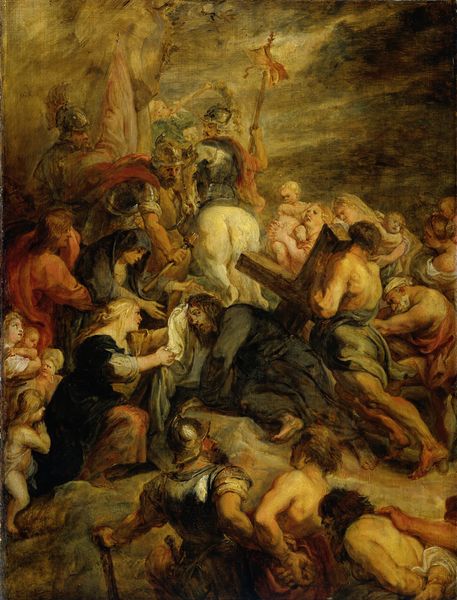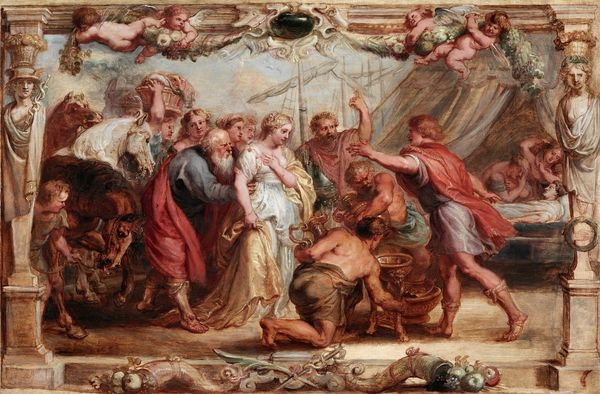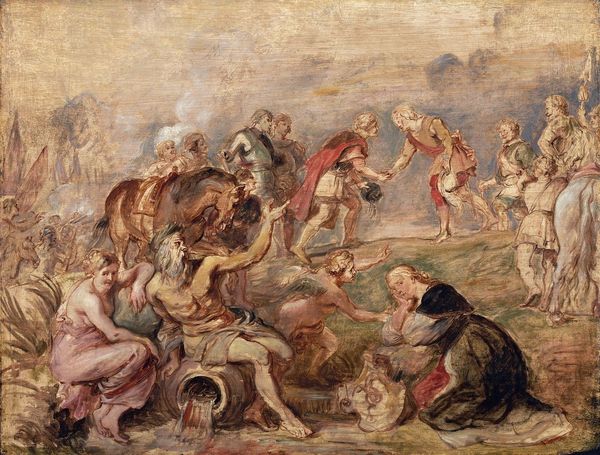
painting, oil-paint
#
figurative
#
baroque
#
painting
#
oil-paint
#
figuration
#
oil painting
#
history-painting
Copyright: Public Domain: Artvee
Curator: Here we have Peter Paul Rubens' oil painting, "Triumphant Entry of Constantine into Rome," created in 1621. It captures a moment of grand historical pageantry. Editor: The drama practically leaps off the canvas! I’m immediately drawn to the figures aloft, are those angels crowning Constantine with what looks like a laurel wreath? Curator: Precisely! The angelic figures do indeed crown Constantine with a wreath symbolizing victory and divine favor. Consider the function of allegory here, though: Constantine's rise also reflects the consolidation of religious power, a political maneuver staged quite meticulously. Editor: Absolutely. I see clear visual allusions to Roman imperial imagery. The rearing horses and the welcoming figures carrying statues – these evoke power, legacy and dominance. Do the fractured columns imply anything about the transition to a new era? Curator: An astute observation. I'm compelled to delve into Rubens' choices with those very classical elements and the paintwork visible upon those crumbled textures. The medium itself reflects on empire and decay through the very active labor Rubens committed to in crafting this history painting. Editor: Interesting point about materiality! Because the painting itself projects permanence, regardless of how the social and political dimensions around this painting began to transform due to the passage of time. Also, are those figures offering Constantine a little golden statue? Is that another visual symbol loaded with political meaning? Curator: That’s likely an idol, perhaps signifying the pagan past Constantine is leaving behind as he enters Rome under the banner of Christianity. Editor: The entire composition is so consciously arranged. With that specific artistic process for deploying layers of symbolic representation, one almost overlooks the physical artistry involved. The scale, brushwork, and manipulation of oil paint is incredibly impactful. Curator: I find myself gravitating to how the artist deploys pigment and light; Rubens had apprentices helping to create this very composition, which indicates a studio approach geared towards prolific production and wealth generation via workshops. Editor: In that sense, contemplating on both political intent behind iconography plus how it can facilitate market demand can be deeply rewarding and surprising. Thanks for shining some light on that. Curator: It has been equally rewarding.
Comments
No comments
Be the first to comment and join the conversation on the ultimate creative platform.
